HA Schult Picture Boxes
HA Schult's are closer to theatrical, even operatic. His expressive imagery always possesses an intensity, an urgenca that demands to be heeded. Indeed, it is with our own excesses that HA Schult boldly confront us. He has made a biting commentary on the indulgent aspects of western society. He calls our attention to our own conspicuous consumption, obsessively returning to the metaphor of garbage, refuse dumps, and debris.
HA Schult's picture boxes give the viewer a slice of his vision of the world. Never static, this vision is multi-dimensional; it is often turbulent, even apocalyptic. These picture boxes are laden with images, episodes, and drama. The artist has described them as "film freeze without people".
His current picture boxes deal with contemporary issues while paying homage to the past. In Romantic Street, he contrasts the old world with the new, as a quaint old German street in picturesque Heidelberg confronts a dynamic panorama of New York City. Another picture box nostalgically features old Hollywood actors and actresses. Paradise Island shows the Bahamas' luxurious holiday playground where pink American Cadillacs frolic decadently in the winter sunshine. There are references to Robert Delaunay's Paris and to Eugene Delacroix's barricades, but HA Schult makes these themes contemporary, linking past and present, the nineteenth century with now time.
Gail Levin, 1988

Unwelt, Lenbachhaus Munich, 1974

Biokinetic Landscape, 197339,37 x 78,74 x 7,8 inches

Unwelt, Lenbachhaus, Munich, 1974

Biokinetic Laboratories, 1972 -1974 129,92 x 118,11 x 7,87 inches

Unwelt, Lenbachhaus, Munich, 1974
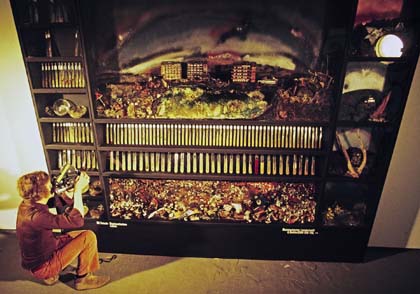
Biokinetic Laboratories, 1972 documenta 5, Fridericianum, Kassel
first version
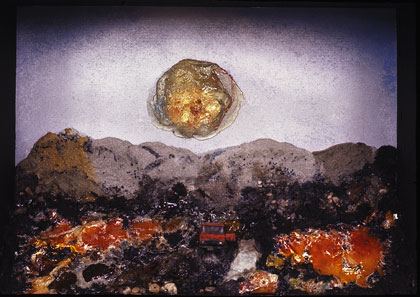
Biokinetische Plantage, 1972
19.69 x 27.56 x 7.87 inches
Otto van de Loo gallery, Munich
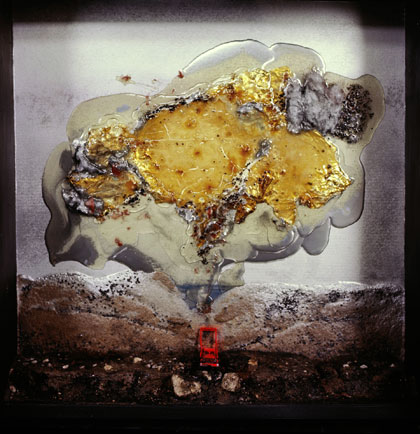
Biokinetischer Wolkenpilz, 1972
27,56 x 27,56 x 7,87 inches
Galerie Klein, Bonn, Germany

BP – Die Kraft und die Sicherheit, 1972
27,56 x 27,56 x 7,87 inches
Karl Ernst Osthaus Museum, Hagen, Germany
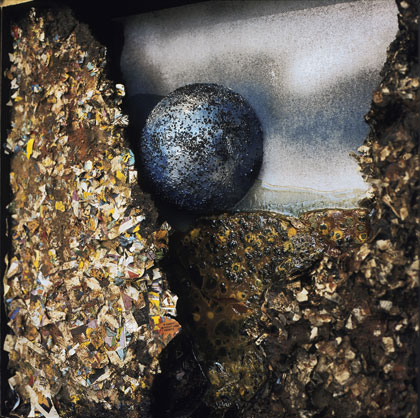
Garbage Planet Earth, 1971-1972
27,56 x 27,56 x 7,87 inches
Collection Thomas Lüttge, Ascholding, Bavaria
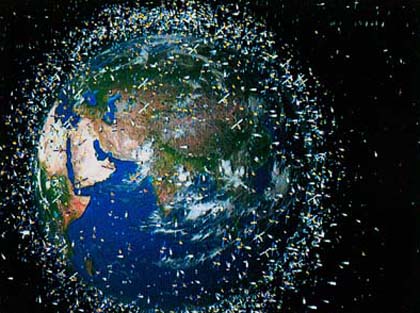
Garbage Planet Earth, 2012
Universe

Roma, 1972 – 198139,37 x 39,37 x 7,87 inches
Collection The Solomon R. Guggenheim Museum,
New York, N. Y.
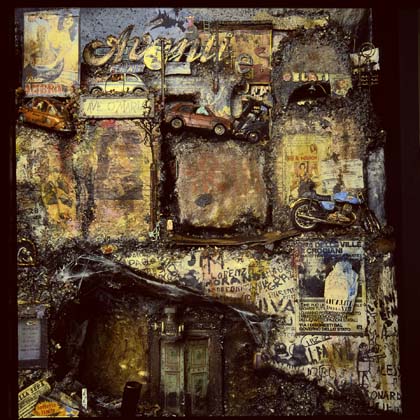
Roma, 1972-1981
39,37 x 39,37 x 7,87 inches, detail
Collection The Solomon R. Guggenheim Museum, New York, N. Y.
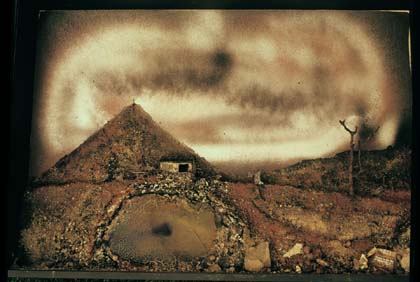
Biokinetik unter dem Kreuz, 1972
27.56 x 39.37x 7.87 inches
Collection Kunsthalle zu Kiel, Germany

L’état c’est moi, 1976 27,56 x 27,56 x 7,87 inches
Collection Hermann Waibel, Ravensburg
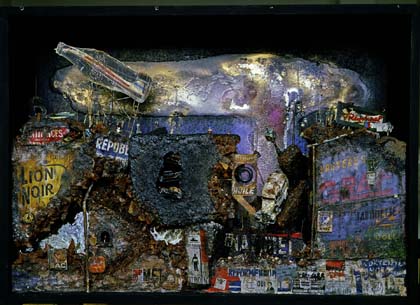
Rue Emile LIP, 1976
27.56 x 19.69 x 7.87 inches
Collection Doris and Peter Bagel, Düsseldorf
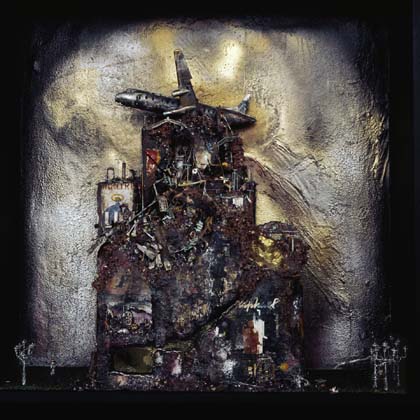
In monument pour LIP, 1976
27,56 x 27,56 x 7,87 inches
Collection Kunsthalle Recklinghausen, Germany

Armyrakete im Biokinetischen Wald, 197227,56 x 27,56 x 7,87 inches
Collection Dr. Egon Maus, Icking, Bavaria

Von Traum zu Traum, 197727,56 x 27,56 x 7,87 inches
Collection Zaira and Marcel Mis, Brussels
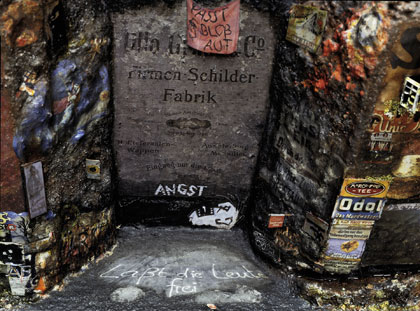
Angst, 1982-1983
27,56 x 27,56 x 7,87 inches, detail
Collection Ruthraut and Jürgen Steinbrecher, Wittmund, Germany

Deutsch-Land, 1986, working on the picture

Deutsch-Land, 1986 German Bundestag, Richard von Weizsäcker, German Federal President

Deutsch-Land, 1986118,11 x 118,11 x 15,75 inches
Collection Federal Republic of Germany

Alpenblick, 1975
39,37 x 78,74 x 7,8 inches
Collection Dr. Inge and Michael Oppenhoff, Cologne

Altar der Wissenschaft, 1987118 x 118 x 7,8 inches, detail
Collection B. Braun, Melsungen, Germany

Der ausgesparte Mensch, Kunsthalle Mannheim, 1975 HA Schult, Duane Hanson, Yves Klein

Gabriele Henkel, HA Schult Hans Strelow gallery, Düsseldorf, 1982

Anhalter Bahnhof, 198139,37 x 39,37 x 7,87 inches
Collection Gisela and Dr. Hansjakob Krebs,
Krefeld, Germany
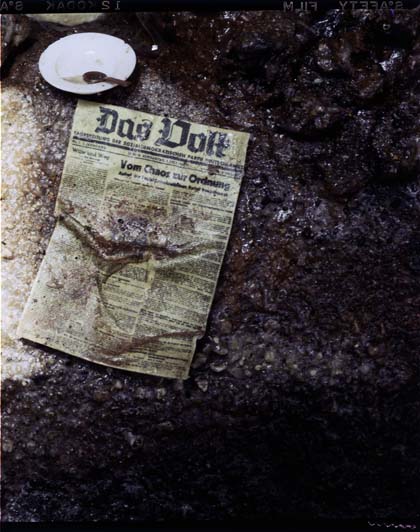
Anhalter Bahnhof, 1981
39,37 x 39,37 x 7,87 inches, detail
Collection Gisela and Dr. Hansjakob Krebs,
Krefeld, Germany

Vaterland, 198139,37 x 39,37 x 7,87 inches, detail
Collection Guido Orsi, Milan, Italy
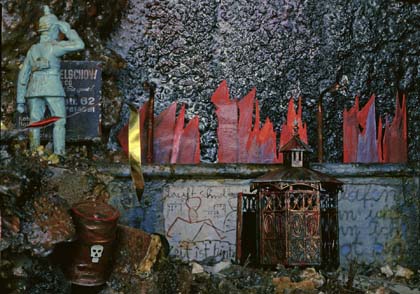
Vaterland, 198139,37 x 39,37 x 7,87 inches, detail
Collection Guido Orsi, Milan, Italy

Vaterland, 198139,37 x 39,37 x 7,87 inches, detail
Collection Guido Orsi, Milan, Italy

Vaterland, 198139,37 x 39,37 x 7,87 inches, detail
Collection Guido Orsi, Milan, Italy
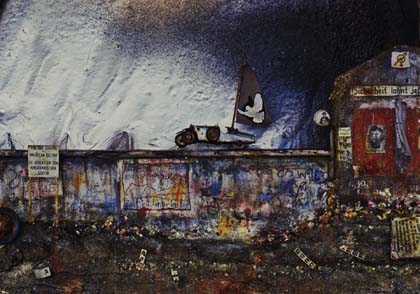
Lauft schneller, die alte Zeit ist hinter uns her…, 1984
19.69 x 27.56 x 7.87 inches, detail
Collection Gabriele and Prof. Dr. Klaus Peter Schulitz, Düsseldorf

Freedom, 1982 – 198839,37 x 39,37 x 7,87 inches
Collection Mr. and Mrs. William Gofen, Chicago

The Garden of Eden, 197939,37 x 39,37 x 7,87 inches
Collection Dr. Inge and Michael Oppenhoff, Cologne

The Palace, 1981-1982
39,37 x 39,37 x 7,87 inches, detail
Collection Dr. Hannelore and Klaus Murmann,
Kiel, Germany
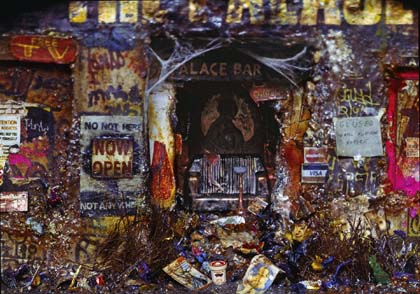
The Palace, 1981-1982
39,37 x 39,37 x 7,87 inches, detail
Collection Dr. Hannelore and Klaus Murmann,
Kiel, Germany
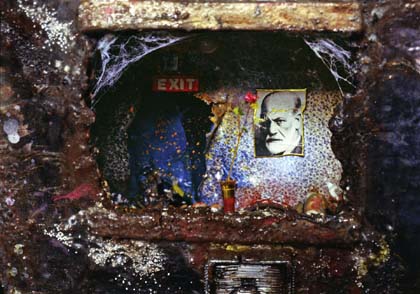
The Palace, 1981-1982
39,37 x 39,37 x 7,87 inches, detail
Collection Dr. Hannelore and Klaus Murmann,
Kiel, Germany
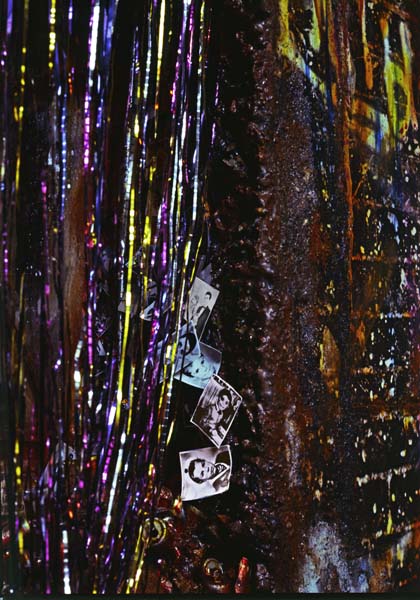
Atomic Star, 1978-1982
39,37 x 78,74 x 7,8 inches, detail
Collection Dorothee and Karl Ludwig Schweisfurth, Munich
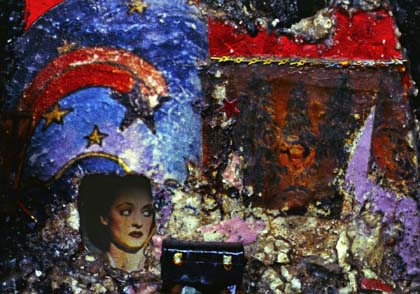
Hollywood, 1981
39.37x 27.56 x 7.87 inches, detail
Collection Dr. Inge and Michael Oppenhoff, Cologne

Love, 198427,56 x 27, 56 x 7,87 inches, detail
Collection Elke Koska, Cologne

Closed, 1981
27.56 x 19.69 x 7.87 inches, detail
Collection Isi and Dr. Ed Deselaers, Düsseldorf
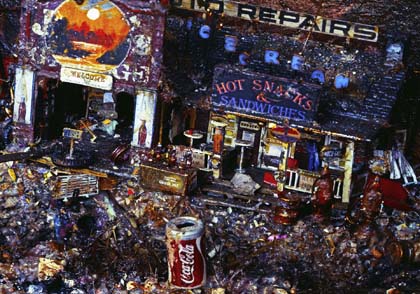
Closed, 1981
27.56 x 19.69 x 7.87 inches, detail
Collection Isi and Dr. Ed Deselaers, Düsseldorf

Building, 198419,69 x 19,69 x 7,87 inches, detail
Collection Ellen and Michael Ringier, Küsnacht, Switzerland
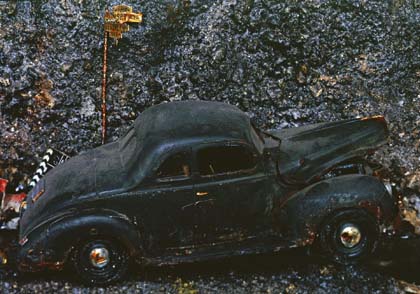
Hollywood, 1981
39.37x 27.56 x 7.87 inches, detail
Collection Dr. Inge and Michael Oppenhoff, Cologne
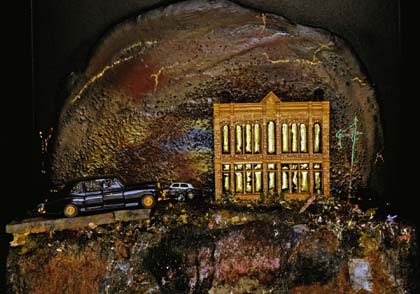
Black Tie, 1984
19,69 x 19,69 x 7,87 inches, detail
Collection Joanne and Howard E. Hassler, New York
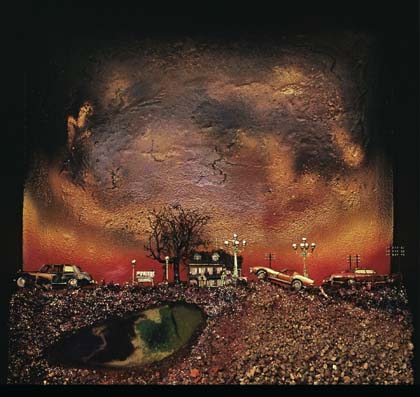
Eingekreistes Haus, 1974
27,56 x 27,56 x 7,87 inches
Collection Carina Burda, Baden Baden, Germany
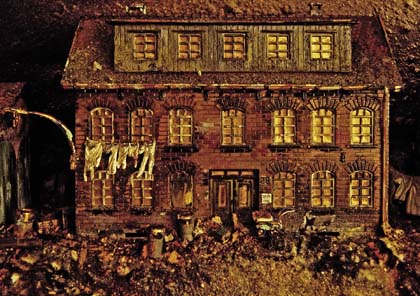
Scorpio Rising, 1972
39,37 x 78,74 x 7,8 inches, detail
Collection Isabel and Friedrich A. Scheidt, Kettwig, Germany
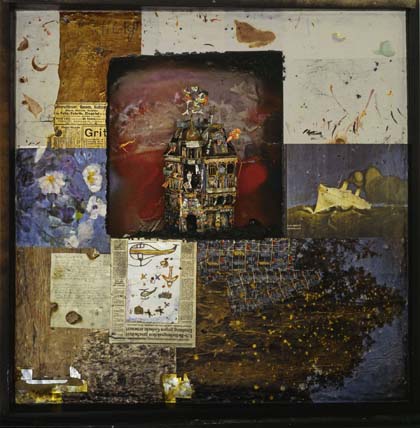
Überdosis, 1982-1983
27,56 x 27,56 x 7,87 inches
Collection Mutter Museum, Wiesbaden, Germany
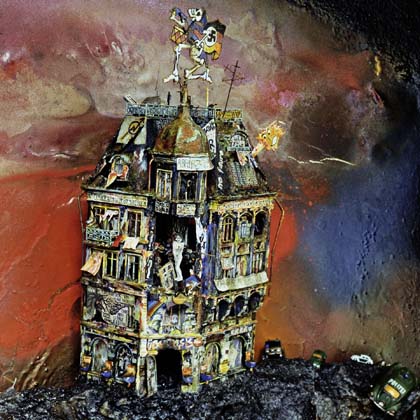
Überdosis, 1982-1983
27,56 x 27,56 x 7,87 inches, detail
Collection Mutter Museum, Wiesbaden, Germany
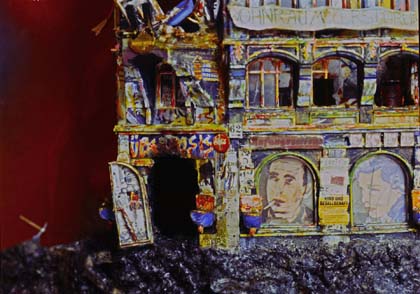
Überdosis, 1982-1983
27,56 x 27,56 x 7,87 inches, detail
Collection Mutter Museum, Wiesbaden, Germany

Arson Attack, 1993
Solingen, Germany
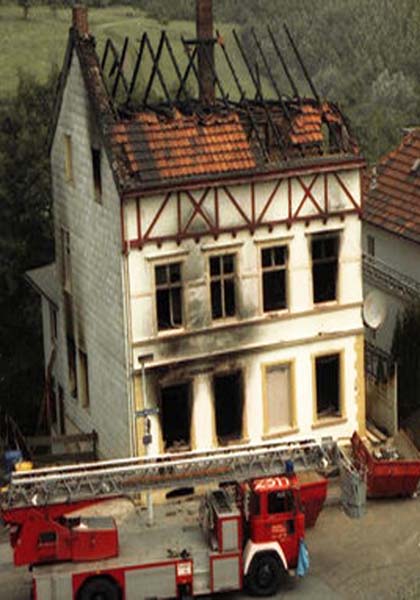
Arson Attack, 1993
Solingen, Germany
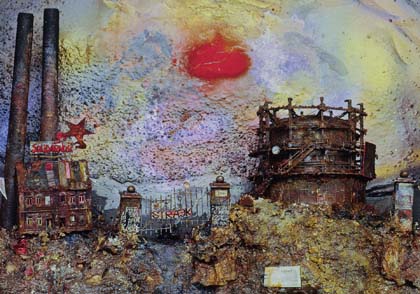
Strajk, 1982
19.69 x 11.81 x 7.87 inches, detail
Collection Margrit and Consul Dr. Dieter Schulz, Lübeck, Germany
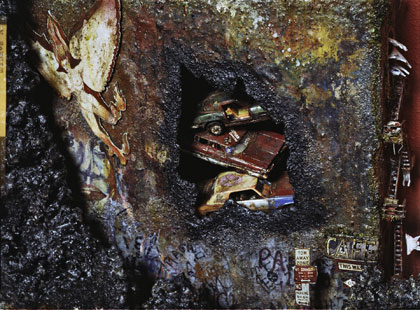
Atomic Star, 1978-1982
39,37 x 78,74 x 7,8 inches, detail
Collection Dorothee and Karl Ludwig Schweisfurth, Munich

HA Schult arranges a disquieting overall picture using an array of very different materials in his picture box “Schloss Neu-Wahnstein”.
Schloss Neu-WahnsteinHA Schult (* 1939)
Munich, Cologne, New York, Berlin, 1983-1987
Plastic, earth, sand, rocks, paper, bio-kinetic zone
78 x 39.37 x 7.87 inches
Museum Ludwig, Cologne, Germany (ML/SK 5055)
House of European History, Brussels
Illuminated by flames, Schloss Neuschwanstein is sliding down a cliff creating a deliberate and segmented waste dump. There is a treasure trove of things to be found here including contemporary everyday objects, such as cola cans, garden gnomes, newspapers and broken plates. If you look more closely you soon recognize portraits of Ludwig II, Karl Marx, and Ronald Regan painted on pieces of broken plates and on the left there is a banner inscribed with the word “Euroschima” above which flies a dove of peace. Ordinary objects take on a new dimension in this context.
HA Schult portrays a picture of decline in which the fundamental symbols of world history are integrated. The artist wants to – like he determined in 1988 – “show German history that ... ends... at Coca Cola-Forest”. Schloss Neuschwanstein is first and foremost where Ludwig II chooses medieval mythical motifs that have been a part of the national self-image of Germans since the Romantic Movement. Due to the disconcerting context, the signs and symbols begin to disassemble themselves: “The motifs emerge as loose parts of a puzzle” and “reality comes forth”.
In creating “Schloss Neu-Wahnstein” HA Schult built on traditional assembly techniques of Dadaism. As is typical for collages and assemblies, they break the typical perception of the viewer and create new contexts – consequently, such a well known motif like Neuschwanstein offers itself up especially well.
Caroline Sternberg
Literature: Eckmann, Collage pages 74-80; Frank, Schloss Neu-Wahnstein, pg. 115f; Kölner Museums-Bulletin, page 31f,: Salzmann, Mythos Europa, pg. 316, Kat.-Nr. 110
„Götterdämmerung“, Schloss Herrenchiemsee, 14 May to 16 October 2011
Catalog, Primus, Darmstadt
Published by Peter Wolf, Richard Loibl and Evamaria Brockhoff.